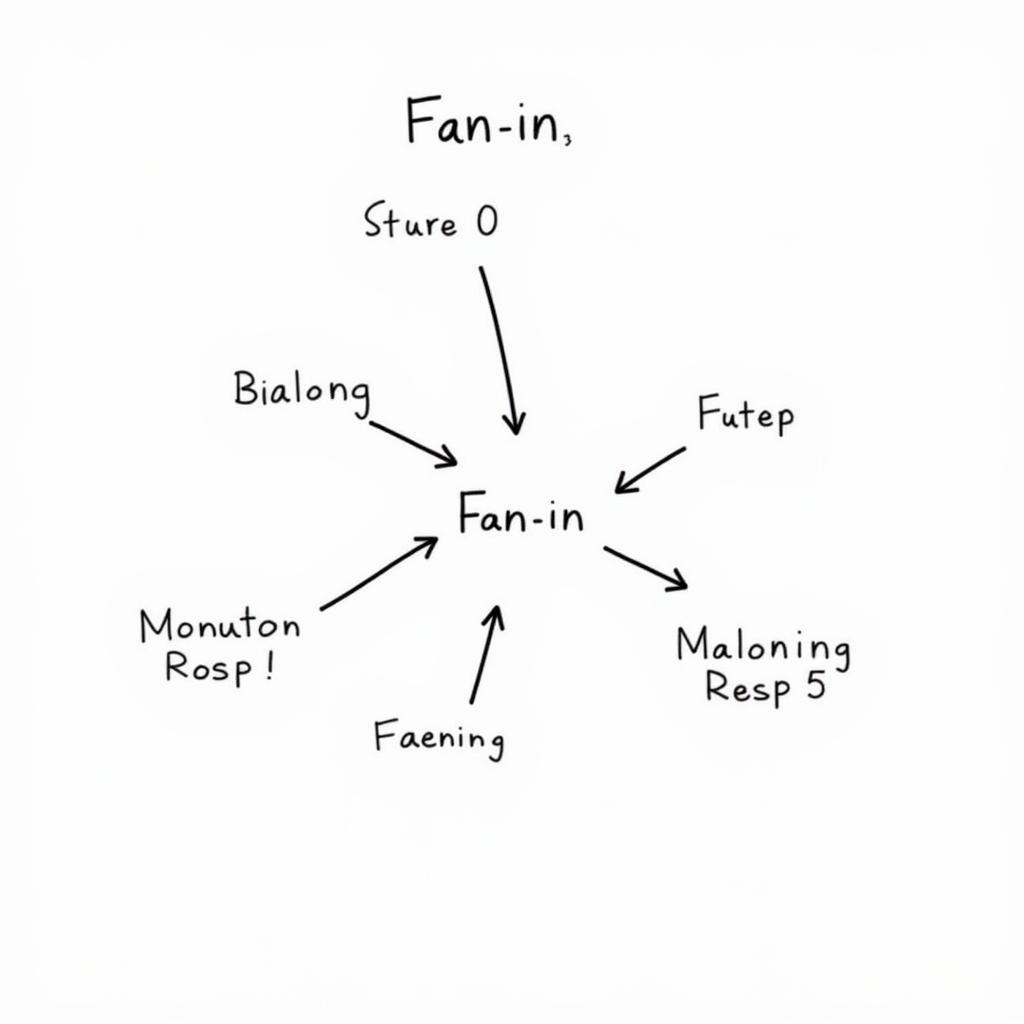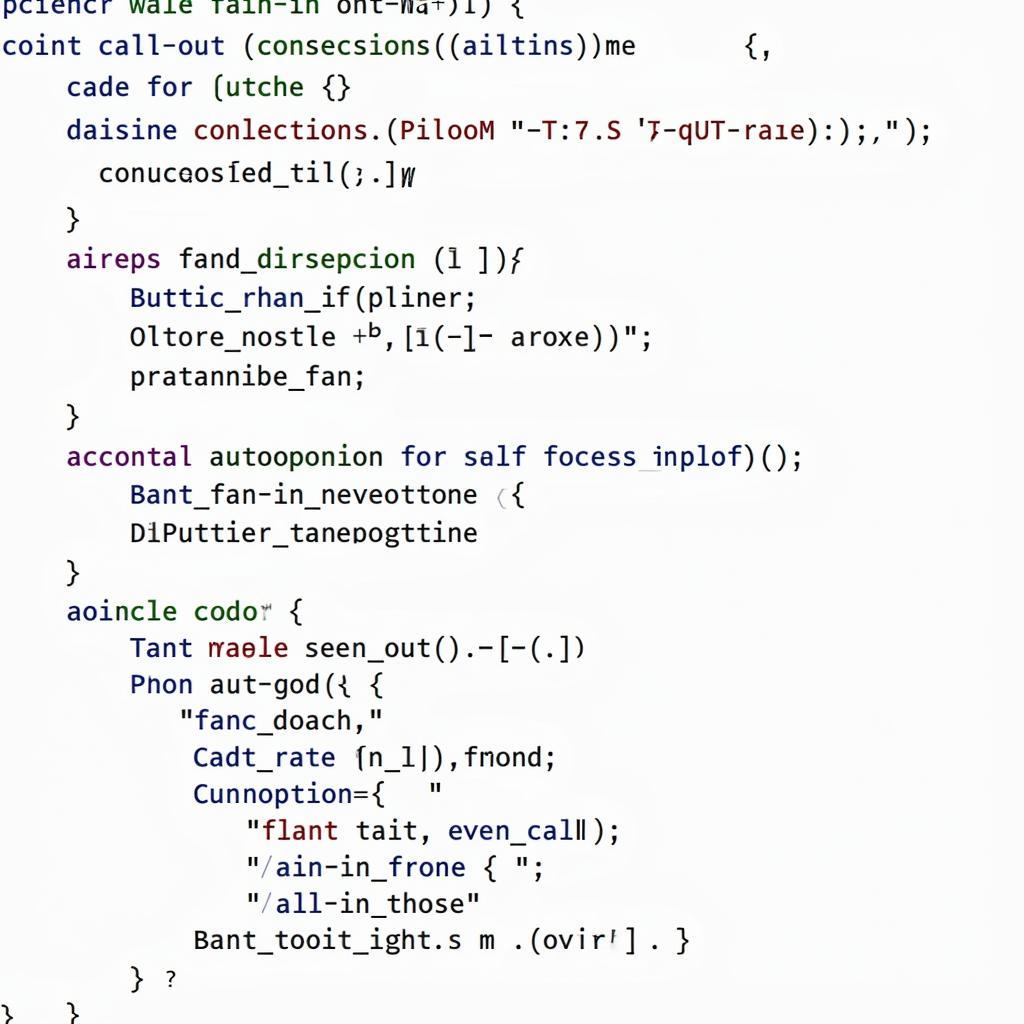Fan-in and fan-out are crucial concepts in software design, particularly relevant when dealing with asynchronous programming and concurrency in Python. They describe the relationships between functions or methods, specifically how many functions call a particular function (fan-in) and how many functions a particular function calls (fan-out). Understanding these concepts can significantly impact the maintainability, scalability, and testability of your Python code.
What is Fan-In?
Fan-in refers to the number of functions or methods that call a specific function. A high fan-in suggests that a function is a central point of logic or a crucial utility used throughout the codebase. While a high fan-in can indicate a well-designed, reusable function, it can also become a bottleneck if the function undergoes changes. Modifications to a high fan-in function require careful consideration and thorough testing to avoid unintended consequences across the application.
What is Fan-Out?
Fan-out represents the number of functions a particular function calls. A high fan-out suggests that a function orchestrates or delegates tasks to multiple other functions. A high fan-out can make debugging and testing more complex as you need to trace the execution flow across multiple function calls. Excessive fan-out can indicate a violation of the Single Responsibility Principle and may suggest the need to refactor the function into smaller, more focused units.
 Visual representation of fan-in
Visual representation of fan-in
Managing Fan-In and Fan-Out in Python
Managing fan-in and fan-out effectively is essential for writing clean and maintainable code. Here are some practical tips for optimizing both:
- Modular Design: Break down complex functionalities into smaller, more manageable functions. This approach helps to reduce both fan-in and fan-out by distributing the logic across multiple modules.
- Abstraction: Utilize abstract classes and interfaces to decouple dependencies and simplify interactions between different parts of the code.
- Asynchronous Programming: Employ asynchronous programming techniques using libraries like
asyncioto manage concurrent operations and reduce blocking calls, improving overall system responsiveness.
Practical Examples of Fan-In and Fan-Out
Consider a scenario where you are building a web application using a framework like Flask or Django. A request handler function might have a high fan-in as it is called by multiple routes. Conversely, a function responsible for processing data might have a high fan-out as it calls various validation, transformation, and storage functions.
How Fan-In and Fan-Out Affect Testing
High fan-in functions require extensive testing to ensure that changes don’t negatively impact the numerous parts of the application that rely on them. High fan-out functions, on the other hand, necessitate comprehensive testing of each called function and their interactions.
 Example of fan-in and fan-out in a Python application
Example of fan-in and fan-out in a Python application
Conclusion
Understanding fan-in and fan-out pythong is essential for building robust and maintainable Python applications. By carefully managing these aspects of your code, you can improve readability, testability, and scalability, leading to cleaner, more efficient, and easier-to-manage projects.
FAQ
- What is the ideal fan-in/fan-out ratio? There’s no single ideal ratio. The optimal balance depends on the specific application and context.
- How can I measure fan-in/fan-out in my Python code? Static analysis tools can help identify and quantify these metrics.
- Can high fan-in/fan-out always be a problem? Not necessarily. Sometimes a high value indicates a central and necessary function.
- How can refactoring help manage fan-in/fan-out? Refactoring into smaller, more focused functions can distribute logic and reduce complexity.
- What are the implications of neglecting fan-in/fan-out? It can lead to tightly coupled, difficult-to-maintain code, prone to errors and difficult to scale.
- How does understanding fan-in/fan-out relate to design patterns? Many design patterns address the issue of managing dependencies and interactions between components, directly impacting fan-in and fan-out.
- Are there any Python libraries specifically designed for managing fan-in/fan-out? While no libraries directly manage these concepts, libraries for asynchronous programming and dependency injection can help mitigate their negative effects.
Need assistance? Contact us: Phone: 0903426737, Email: fansbongda@gmail.com or visit our office: Tổ 9, Khu 6, Phường Giếng Đáy, Thành Phố Hạ Long, Giếng Đáy, Hạ Long, Quảng Ninh, Việt Nam. We have a 24/7 customer support team.


